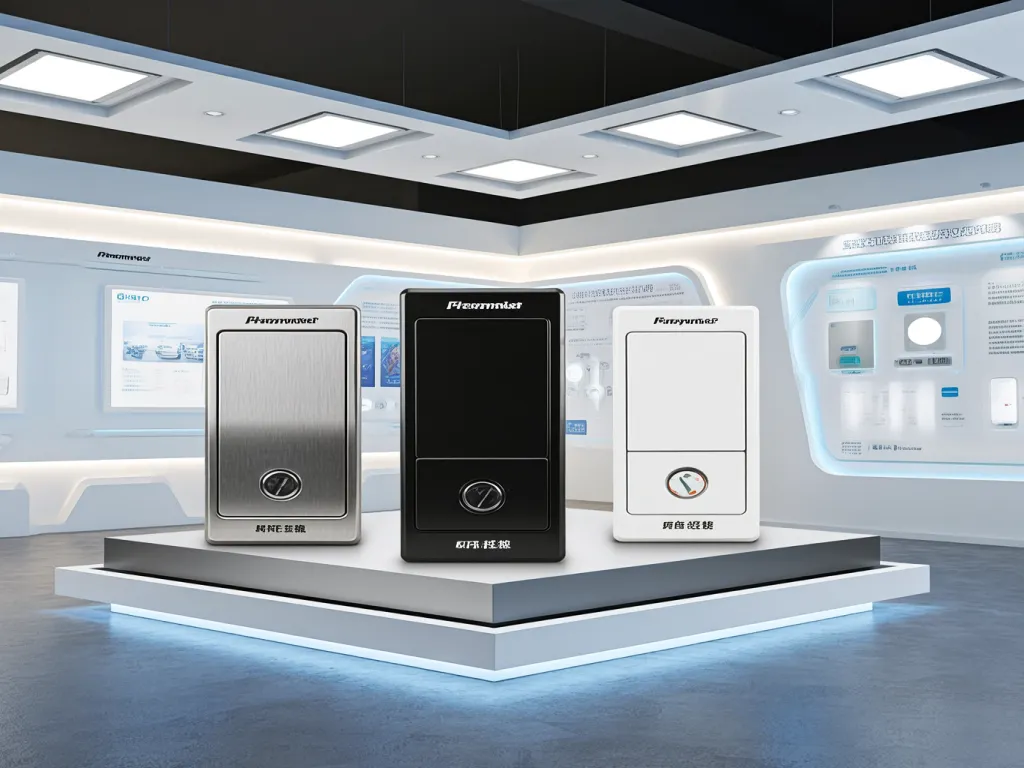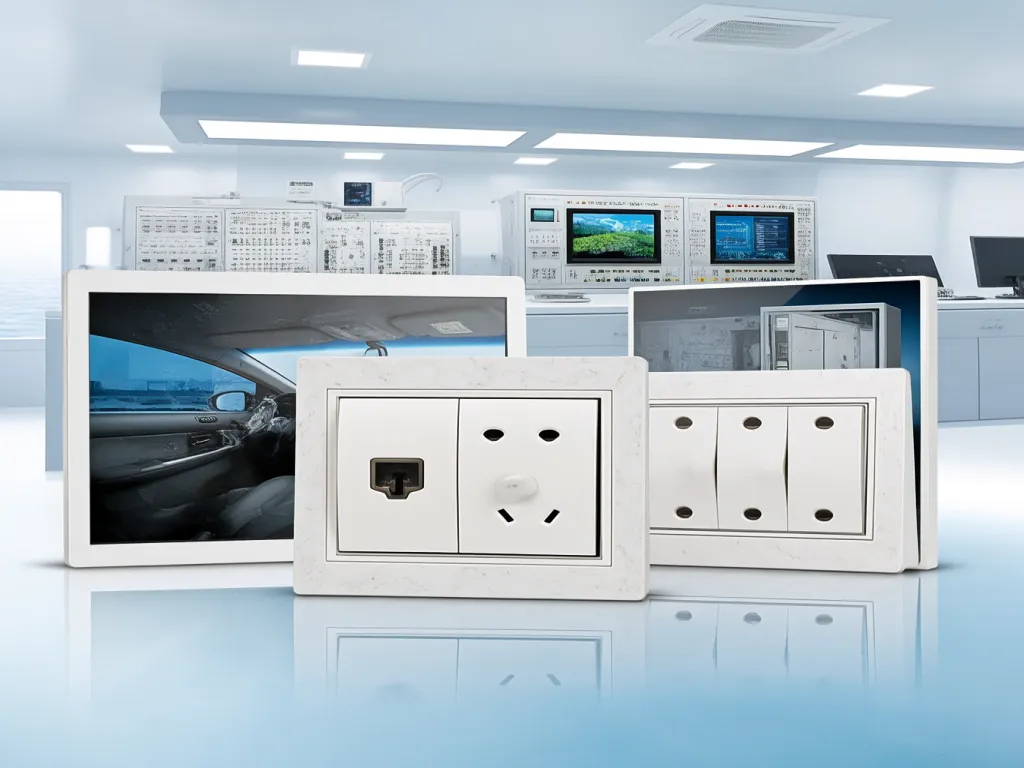Carling Tech Rocker Switch Guide: Match Performance Needs
When it comes to electronic components, precision is key—especially for engineers, buyers, and project managers aiming to strike the ideal balance between performance and cost. Enter the Carling Technologies rocker switch: a versatile component that can make or break your project’s reliability. But how do you choose the right one from Carling’s lineup? In this guide, we’ll break down the critical specs—operating force, travel distance, contact materials—and show you how to match them to your project’s unique demands. Ever wondered if a higher-priced switch guarantees better performance? Let’s dive in and find out.

Detailed Analysis of Key Performance Parameters of Carling Technologies Rocker Switches
When it comes to selecting the right rocker switch for your electronic project, understanding the key performance parameters is crucial. Carling Technologies, a renowned name in the electronic components industry, offers a range of rocker switches that are known for their reliability and performance. In this section, we’ll dive deep into the critical parameters such as operating force, travel distance, and contact materials, and explore how these factors influence the overall performance of Carling Technologies rocker switches. If you’re interested in exploring specific models like the 3-position rocker switch or the illuminated 3-pin rocker switch, these parameters will be equally important in your decision-making process.
Let’s start with operating force. The operating force, often measured in Newtons (N), is the amount of pressure required to activate the switch. This parameter is vital because it determines the ease of use and the tactile feedback you receive when toggling the switch. A switch with too high an operating force might be difficult to activate, especially in applications where frequent switching is required. On the other hand, a switch with too low an operating force might be too sensitive, leading to unintended activations. Carling Technologies offers rocker switches with varying operating forces, allowing you to choose the one that best suits your application’s needs.
Next up is travel distance. Travel distance refers to the distance the actuator (the part you press) moves from its resting position to its fully activated position. This parameter affects the switch’s responsiveness and the user’s perception of the switch’s action. A shorter travel distance can result in quicker activation, which is beneficial in applications requiring rapid switching. However, a very short travel distance might compromise the tactile feel, making it harder for users to discern whether the switch has been properly activated. Carling Technologies rocker switches are designed with optimal travel distances to ensure both quick activation and a satisfying tactile experience.
Now, let’s talk about contact materials. The contact materials are the parts of the switch that make or break the electrical connection when the switch is toggled. These materials play a crucial role in determining the switch’s durability, conductivity, and resistance to corrosion. Common contact materials include silver, gold, and various alloys. Silver offers excellent conductivity but can tarnish over time, affecting performance. Gold, while more expensive, provides superior corrosion resistance and maintains its conductivity over a longer period. Carling Technologies carefully selects contact materials based on the application’s requirements, ensuring reliable and long-lasting performance.
The combination of these parameters – operating force, travel distance, and contact materials – defines the overall performance of a Carling Technologies rocker switch. For instance, a switch designed for industrial machinery might prioritize durability and a higher operating force to withstand harsh environments and frequent use. In contrast, a switch for consumer electronics might focus on a lower operating force and a shorter travel distance for a more responsive and user-friendly experience.
Understanding these parameters and how they interact is essential for selecting the right rocker switch for your project. By considering the specific needs of your application, you can choose a Carling Technologies rocker switch that offers the perfect balance of performance, reliability, and user experience. So, how do you ensure you’re making the right choice? Let’s delve deeper into how these parameters influence the selection process.

Impact of Operating Force on Switch Performance
The operating force of a rocker switch is not just about how hard or easy it is to press. It’s a critical factor that affects the switch’s usability, durability, and even safety. In applications where the switch is used frequently, a lower operating force can reduce user fatigue and improve overall efficiency. However, in environments where accidental activation could be hazardous, a higher operating force provides an added layer of security. Carling Technologies understands this balance and offers switches with a range of operating forces to cater to diverse needs.
Travel Distance and Its Effect on User Experience
Travel distance might seem like a minor detail, but it significantly impacts the user’s interaction with the switch. A well-designed travel distance ensures that the user can feel the switch activate, providing a sense of control and confidence. Too short a travel distance can make the switch feel ‘mushy’ or unresponsive, while too long a distance can slow down the switching process. Carling Technologies rocker switches are engineered with precise travel distances to offer a responsive and satisfying user experience. If you’re interested in a rocker switch with a specific travel distance, consider exploring models like the IP65 waterproof rocker switch.
Contact Materials: The Foundation of Switch Reliability
The choice of contact materials is perhaps the most critical factor in determining a switch’s longevity and performance. Different materials offer varying levels of conductivity, corrosion resistance, and wear resistance. Carling Technologies selects contact materials based on the intended use of the switch, ensuring that it can withstand the environmental conditions and usage patterns it will encounter. This attention to detail ensures that your Carling Technologies rocker switch will perform reliably, year after year.

Comparing Performance Differences Across Carling Technologies Rocker Switch Models: A Project-Specific Selection Guide
When it comes to selecting the right Carling Technologies rocker switch for your project, understanding the nuanced performance differences between models is crucial. Let’s dive deep into the specifics of several popular models, exploring how their unique features align with different project requirements. First up, consider the Carling Technologies AA Series rocker switch. This model is renowned for its robust construction and high operational force, making it ideal for applications where durability and reliability are paramount. The AA Series typically features a sturdy metal actuator and a long travel distance, ensuring a tactile feedback that users can feel. Its silver-plated contacts provide excellent conductivity and resistance to corrosion, which is vital in harsh environments. For projects requiring frequent switching or those exposed to moisture and dust, the AA Series stands out as a top contender. On the flip side, if your project demands a lighter touch and quicker actuation, the Carling Technologies BB Series might be more up your alley. The BB Series is designed with a lower operational force and a shorter travel, making it perfect for applications where ease of use and speed are priorities. Its plastic actuator is lightweight yet durable, and the gold-plated contacts offer superior conductivity and longevity. This model shines in consumer electronics, where a smooth and responsive user experience is key. Now, let’s talk about the CC Series, a versatile option that strikes a balance between the AA and BB Series. The CC Series offers a moderate operational force and travel distance, making it suitable for a wide range of applications. Its dual-pole configuration allows for simultaneous switching of two circuits, which is handy in complex systems. The CC Series also features a variety of actuator styles and colors, enabling customization to match your project’s aesthetic. For projects that require flexibility and a touch of personalization, the CC Series is a great pick. For those seeking a waterproof and customizable rocker switch similar to the CC Series, exploring additional options can provide further insights. But how do you decide which model fits your project best? Start by assessing your project’s specific needs. Do you need a switch that can withstand heavy use and harsh conditions? The AA Series is your go-to. Are you looking for a switch that provides a quick and effortless actuation for a user-friendly interface? The BB Series has got you covered. Or perhaps you need a versatile switch that can handle multiple circuits and offers customization options? The CC Series is the way to go. Remember, selecting the right rocker switch isn’t just about the technical specifications. It’s also about understanding how those specs translate into real-world performance and user experience. So, take the time to evaluate your project’s requirements, consider the operating environment, and think about the end-user’s needs. By doing so, you’ll be able to make an informed decision that ensures your project’s success.
AA Series: The Heavy-Duty Champion
The AA Series rocker switch from Carling Technologies is a powerhouse designed for applications that demand durability and reliability. Its high operational force and long travel distance make it suitable for industrial machinery, automotive systems, and outdoor equipment. The metal actuator provides a tactile feedback that users can rely on, while the silver-plated contacts ensure consistent conductivity even in challenging environments. If your project involves frequent switching or exposure to moisture and dust, the AA Series is a robust choice that won’t let you down. For those interested in exploring waterproof rocker switch alternatives, additional options may provide valuable insights.
BB Series: The Lightweight Performer
For projects where ease of use and speed are essential, the BB Series rocker switch shines. Its lower operational force and shorter travel distance make it perfect for consumer electronics, medical devices, and any application where a smooth and responsive user experience is crucial. The plastic actuator is lightweight yet durable, and the gold-plated contacts offer excellent conductivity and resistance to wear. If you’re looking for a switch that provides quick actuation without compromising on performance, the BB Series is an excellent option. For those interested in a mini rocker switch with circuit breaker functionality, exploring additional options may provide further insights.
CC Series: The Versatile All-Rounder
The CC Series rocker switch offers a balanced approach, combining moderate operational force and travel distance with a dual-pole configuration. This makes it suitable for a wide range of applications, from simple control panels to complex systems requiring simultaneous switching of two circuits. The variety of actuator styles and colors allows for customization, making the CC Series a great choice for projects that need a touch of personalization. Whether you’re looking for flexibility, customization, or a bit of both, the CC Series has you covered. For those seeking a waterproof LED rocker switch with similar versatility, exploring additional options can provide further insights.

Case Study Analysis: Precision Selection of Carling Technologies Rocker Switches for Optimal Performance-Cost Balance
When it comes to selecting the right Carling Technologies rocker switch for your project, understanding the nuances of performance requirements versus cost constraints is crucial. Let’s dive into some real-world scenarios to illustrate how you can make an informed decision that hits the sweet spot between functionality and affordability.
Imagine you’re working on a marine application where the rocker switch needs to withstand harsh environmental conditions, including saltwater exposure and constant vibration. In this case, the Carling Technologies’ Contura series, known for its rugged design and corrosion-resistant materials, would be an excellent choice. Despite being slightly more expensive than basic models, its durability ensures long-term reliability, reducing maintenance costs and downtime. This decision balances the initial investment with long-term savings, a classic example of performance-cost optimization.
Now, consider a different scenario: a low-voltage, indoor control panel for a residential HVAC system. Here, the emphasis shifts towards cost-effectiveness without compromising on basic performance requirements like electrical ratings and ease of use. The Carling Technologies’ standard rocker switch line, offering reliable operation at a competitive price point, fits perfectly. By not over-specifying, you avoid unnecessary expenses while still meeting the project’s needs. For those seeking specific models, options like the KCD2 2-position red LED rocker switch provide a blend of functionality and affordability.
But how do you quantify these decisions? It starts with a thorough analysis of your project’s specific requirements. For instance, if your application demands a high number of actuation cycles, focus on switches with a proven track record of longevity, even if it means a slightly higher upfront cost. On the other hand, if the switch is rarely used and in a protected environment, a more economical option might suffice.
Let’s look at a case study from the automotive industry. A manufacturer was upgrading the interior lighting controls of their vehicles, aiming for a more intuitive and durable solution. After evaluating several options, they chose Carling Technologies’ sealed rocker switches, which offered both IP67 rating for dust and water resistance and a tactile feedback mechanism for user comfort. While these switches were more expensive than standard alternatives, the investment paid off in terms of reduced warranty claims and enhanced customer satisfaction, demonstrating the value of prioritizing performance in critical areas.
In another instance, a small-scale electronics manufacturer needed to replace outdated toggle switches in their product line with more modern rocker switches. Budget constraints were tight, but they couldn’t compromise on electrical safety. By selecting a mid-range Carling Technologies model that met all safety standards and offered a good balance of features and price, they achieved a cost-effective upgrade without sacrificing quality.
So, how can you replicate this success in your projects? Start by clearly defining your performance criteria: environmental conditions, electrical requirements, expected lifespan, and user interaction. Then, research Carling Technologies’ product range, comparing not just prices but also the value each model brings in terms of reliability, ease of maintenance, and additional features like backlighting or custom engraving.
Remember, the cheapest option isn’t always the most cost-effective in the long run. Consider the total cost of ownership, including installation, maintenance, and potential downtime costs. And don’t hesitate to reach out to Carling Technologies’ technical support or your distributor for guidance. They can provide valuable insights based on similar projects and help you navigate the selection process with confidence.
In conclusion, selecting the right Carling Technologies rocker switch is a blend of art and science. It requires a deep understanding of your project’s needs, a thorough evaluation of available options, and a willingness to invest in quality where it matters most. By following the principles outlined in these case studies, you can achieve a performance-cost balance that ensures your project’s success and satisfaction for years to come.
Marine Application Scenario
In marine applications, durability is key. The Contura series from Carling Technologies stands out with its corrosion-resistant materials and rugged design, making it ideal for withstanding saltwater and vibration. Though initially more expensive, its longevity reduces maintenance costs, showcasing the importance of investing in quality for long-term savings. For those seeking similar durability in a marine-specific context, models like the IP65 waterproof marine DPDT rocker switch offer tailored solutions.
Residential HVAC System Scenario
For a residential HVAC system’s control panel, cost-effectiveness is paramount without sacrificing basic performance. Carling Technologies’ standard rocker switch line offers reliable operation at a competitive price, demonstrating how not over-specifying can lead to significant cost savings while meeting project requirements.
Automotive Industry Case Study
In the automotive industry, upgrading to Carling Technologies’ sealed rocker switches for interior lighting controls proved beneficial. Despite a higher initial cost, the IP67 rating and tactile feedback enhanced durability and user experience, reducing warranty claims and boosting customer satisfaction.
Small-Scale Electronics Manufacturer Scenario
A small-scale electronics manufacturer replaced outdated toggle switches with Carling Technologies’ mid-range rocker switches. Balancing budget constraints with electrical safety, they achieved a cost-effective upgrade without compromising on quality, highlighting the importance of evaluating total value. For those seeking versatile options, models like the 4-pin rocker switch T125 offer a blend of functionality and affordability.
Choosing the right Carling Technologies rocker switch isn’t just about specs—it’s about aligning those specs with your project’s real-world needs. From understanding key parameters like operating force and contact materials to comparing models side-by-side, this guide equips you to make informed decisions that balance performance and budget. Ready to take the next step? Explore Carling’s full range of rocker switches, test samples in your setup, or share this guide with your team to streamline your selection process. The perfect switch is out there—now you know how to find it.

